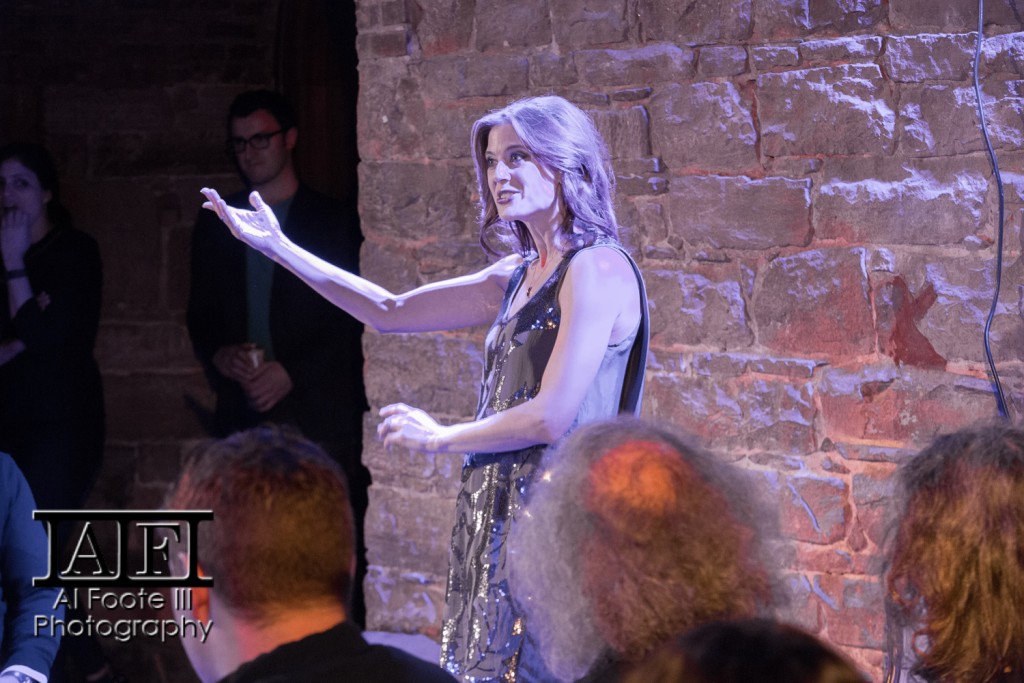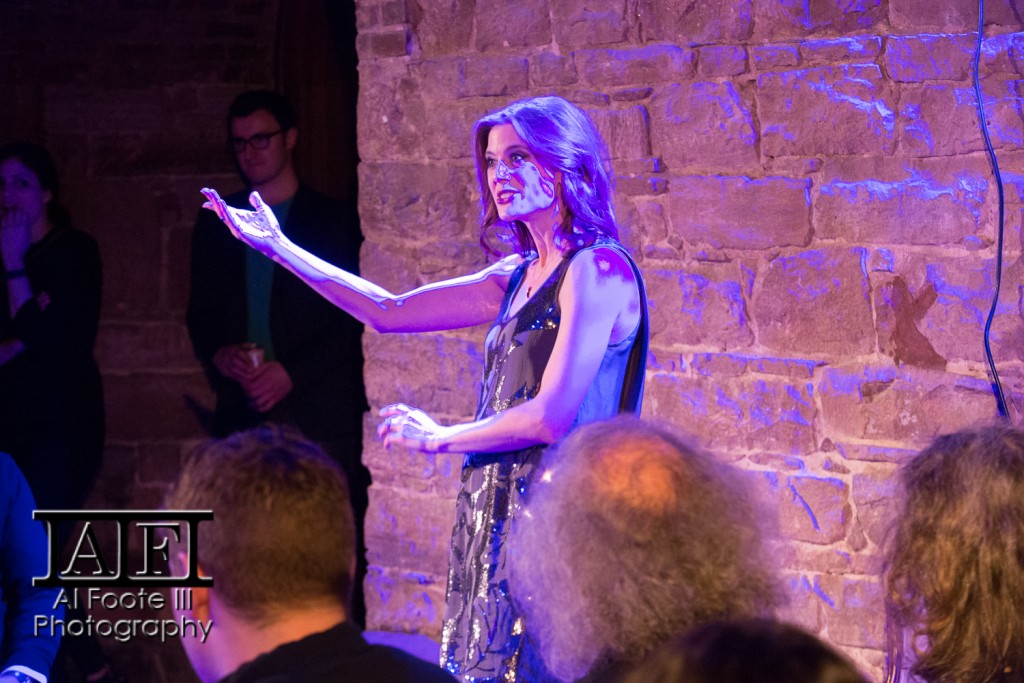More and more I’m finding LED lighting being used in small budget theatre. I get the appeal — one instrument can give multiple color looks, as opposed to gelling lights, where you would need multiple instruments giving one look each. Plus you’re saving on gels and you never don’t have the color you want. Lots of plusses.
But they can drive photographers crazy! Take a look at this photo of the usually lovely Elizabeth Inghram in I Knew It! from Nylon Fusion’s This Round’s On Us short play festival. Of 11 plays using the same lights, only a couple had such a marked effect, but what do you do with this?!?
Well, you desaturate and pull down the highlights. And you’ve got this:

Salvageable, but not great.
The problem seems to be most visible with highly saturated colors at high levels. Some photographers report that lower shutter speeds seem to help the issue — which is counter intuitive, since it seems to happen when the lights are brighter. The thought is that the issue is caused by pulse-width modulation (PWM). Basically, there are two ways to control the brightness of an LED — analogue and PWM. The former is a regulation of how much power goes to the LED. It is inefficient, power-wise, and can result in inaccuracies color. PWM essentially turns the LED on and off at high speed. If your light is at full, it spends all the time on. At 50%, it’s cycling on and off so it is on half the time. At 10% it’s on 10% of the time and off 90%. This can result in a visible flicker to the LED, so with multiple LEDs in an instrument, you would ensure that the LEDs are not cycling together, so some are on while others are off.
But here’s where it gets more complicated. With an RGB LED instrument you have red, green and blue LEDs combining to make all the different colors of the rainbow and each primary color will be at a different power level, to combine and make the desired color. Take this swatch, for instance:
This lovely blue has an RGB value of 60/40/200, respectively. Now these are values out of 255, so percentage wise, we’re talking red being on 26% of the time, green on 16% of the time and blue on 78% of the time. That’s at full. If we want that color at 75%, we’re getting into algebra. Now each set of LEDs are hopefully working to prevent flicker amongst themselves, but who can say at the moment in time when the shutter clicks how many of which LEDs are actually on. But now you can see how a longer exposure would help average things out.
If anyone can poke holes in any of my assumptions (and there are a lot of them!), please reach out on Facebook. I’d love to be more confident when I see LED instruments that I won’t have hours of post-processing ahead of me.

